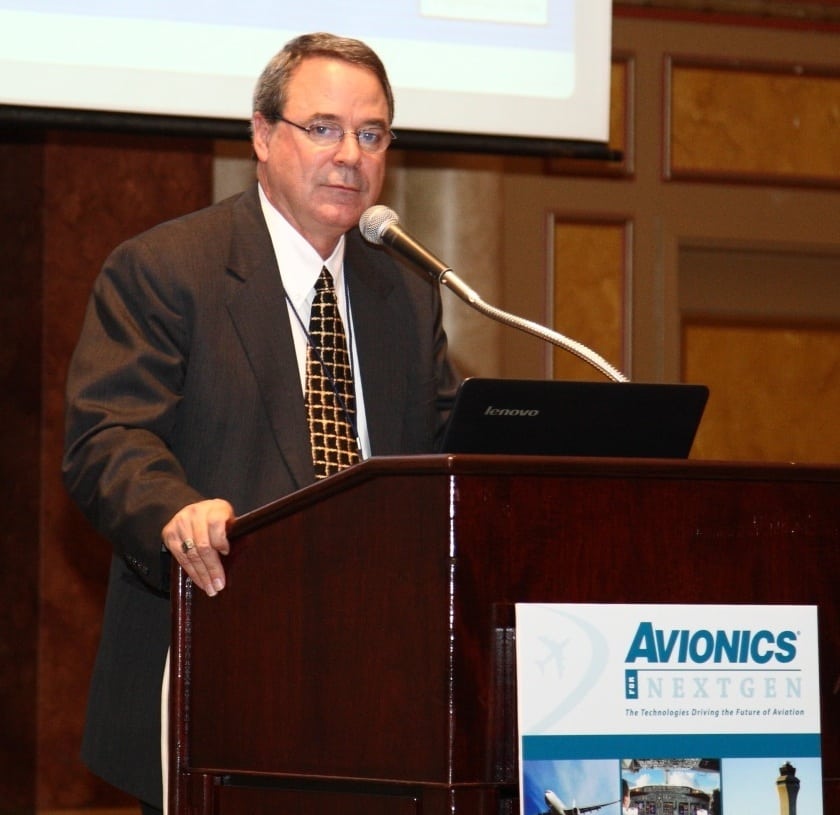 |
NEXA Capital Partners Founder Michael Dyment
Photo/Aleksey Photography |
Trust, cooperation and collaboration among industry stakeholders, and among the varied programs, are key drivers to implementing the FAA’s NextGen modernization program, according to panelists at the Avionics for NextGen conference, organized by Avionics Magazine.
The event, which was held Tuesday in Atlantic City, N.J., brought together representatives from major U.S. airlines, FAA, Department of Defense, avionics manufacturers, airframe manufacturers and component suppliers to discuss the six programs of the NextGen Implementation Plan — System-Wide Information Management (SWIM), Data Communications, Automatic Dependent Surveillance-Broadcast (ADS-B), National Airspace System (NAS) Voice Switch, Collaborate Air Traffic Management Technologies (CATM-T) and NextGen Weather.
Panelists throughout the day said it is important to take a systemic approach to NextGen, keeping in mind the benefits the programs can bring to the operators. Many of the programs, including SWIM and Datacomm, overlap and require a certain amount of interoperability. “Nothing can be looked at in isolation. I think the notion of interoperability … is a difficult challenge,” said Capt. Ken Speir, director, line operations, Delta Airlines, and a member of the Data Communications panel. “To provide operational benefit to the NAS by sitting in the front of a cockpit you have to be able to link of the pieces together.”
In the end, NextGen is about the benefits to the users, being able to operate safer, more efficient and more environmentally friendly routes. The implementation can be mired, however, in regulatory, budgetary, equipage and policy issues. However, panel members urged all stakeholders to not let perfection get in the way of good. As equipage deadlines approach, it is important to identify “lessons learned” of operational trials. Many airlines are looking to these trials to bolster the business case for investing the money in these new technologies.
Michael Dyment, founder of NEXA Capital Partners, which manages of $1.5 billion capital investment for operators to equip with NextGen technology, said public-private partnerships like his firm’s will be vital to equipping aircraft with appropriate systems, and in the end will help make NextGen a reality.
“NextGen calls for governments, such as our FAA, to do their part in building the infrastructure and the capabilities required to implement the next generation capabilities for flight and for air traffic control,” Dyment said. “There is a burden placed on the U.S. transport community to finance equipage. … The benefits to the airlines generally only accrue however if there is predominant equipage. …. That’s the challenge. It’s not just the business case airplane to airplane, but how do you get to predominant equipage and how do you do it with the business case complicated by a four or five year delay before any benefit will show up in the investment.”
Business cases are complicated and the NextGen “system of systems” can be daunting, but even incremental steps can go a long way to seeing benefits in the NAS, according to attendees. “It’s an evolution, not revolution. Aircraft fleets in general are not homogeneous; they don’t evolve at the same pace. They are as varied as the world population is. You have to take into account that there is no big bang theory for airplanes,” said Forrest Colliver, avionics integration team lead, system transformation and integration, MITRE.